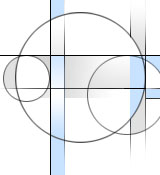





1. Space Environment
1.1. The Solar System
1.1.1 The Sun
1.1.2 The Inner Planets
1.1.3 Asteroids and Comets
1.1.4 The Gas Giants
1.1.5 Pluto and the Kuiper belt
1.2. Gravity Fields
1.2.1 Gravitational Attraction of a Spherical Celestial Body
1.2.2 The Potential Field of Oblate Celestial Bodies
1.3. The Structure of the Atmosphere
1.3.1 Barometric Scale Height
1.3.2 The Earth's Atmosphere
1.3.3 Atmospheres of other Celestial bodies
1.4. The Structure of the Magnetosphere
1.4.1 Planetary Magnetic Fields
1.4.2 Magnetism and Particle Radiation
1.5. Man in Space
1.5.1 Man on the way to space and back
1.5.2 Man Living in Space
1.5.3 Health Hazards in Space
1.6. Progress in Technology and Future Space Flight
1.6.1 Technological Environment for Space Projects
1.6.2 Future Exploration of our Solar System
1.6.3 Interstellar Spaceflight
2. Rocket Propulsion
2.1. Theory of Rocket Motors
2.1.1 Expulsion of Propellent
2.1.2 Thrust and Impulse of a Rocket Stage
2.1.3 Multi Stage Rockets
2.2. Rocket Propellent
2.2.1 Properties of Chemical Rocket Propellent
2.2.2 Cryogenic Propellent
2.2.3 Storable Liquid Propellent
2.2.4 Solid Propellent
2.3. The Combustion Process
2.3.1 Combustion of Liquid Propellent
2.3.2 Combustion of Solid Propellent
2.3.3 Propellent Application and Performance
2.3.4 Computation of the Chamber Temperature
2.3.5 The Composition of the Chamber Gas
2.4. Hypersonic Nozzles
2.4.1 Thermodynamic Phenomena inside the Rocket Nozzle
2.4.2 Velocity and Temperature in the Isentropic Nozzle
2.4.3 Overexpanding Nozzles
2.4.4 The Shifting Chemical Equilibrium
2.4.5 Nozzle Geometry
2.5. Liquid Rocket Stages
2.5.1 Tanks and Structures
2.5.2 Thrust Chambers
2.5.3 Turbopump Feed Systems
2.5.4 Liquid Engine Sub-Masses
2.6. Solid Rocket Motors
2.6.1 Solid Propulsion for Space Applications
2.6.2 The Burning Rate of Solid Propellent
2.6.3 Grain Configuration
2.6.4 Solid Motor Cases
2.6.5 Solid Motor Nozzles
2.6.6 Ignition and Control of Solid Rocket Motors
2.7. Attitude and Trajectory Control Thrusters
2.7.1 Gas Pressure Feed Systems
2.7.2 Auxiliary Propulsion Systems
3. Launch Services
3.1. Applications for Space Launchers
3.1.1 Target Orbits
3.1.2 Commercial Market for Satellite Launch Services
3.1.3 Influences on the Commercial Launch Market
3.2. General Space Launcher Design Aspects
3.2.1 Performance Optimization.
3.2.2 The Appropriate Propellent
3.2.3 Optimal Launcher Size
3.2.4 Flight Safety Aspects
3.3. Evaluation of Commercial Launch Services
3.3.1 Launch Vehicles
3.3.2 Launcher Costs
3.3.3 Launcher Payload
3.3.4 Launcher Quality Comparison
3.4. Optimization of Space Launchers
3.4.1 The Concept Ariane-5 Commercial
3.4.2 The Airborne Ariane-4 Launcher
3.5. The Promise of Modern Technology
3.5.1 The Concept of Reusability
3.5.2 Single Stage to Orbit Vehicles
3.5.3 Aerospace Planes
3.5.4 The Future of Space Transportation
3.5.5 Infeasible Ways to Access Space
4. Spacecraft Trajectories
4.1. Vectors and Coordinate Systems
4.1.1 Moving Coordinate Systems
4.1.2 Coordinate Transformation
4.1.3 Rotation Velocity
4.1.4 Vector Differentiation in a Rotating Coordinate System
4.2. Mechanics of Rocket-Powered Flight
4.2.1 The Gravitational Force
4.2.2 Aerodynamic Forces
4.2.3 Thrust Acceleration
4.2.4 Equations of Motion
4.2.5 Mechanical Energy of a Trajectory
4.2.6 The Angular Momentum Vector
4.3. Orbital Flight
4.3.1 Conic Orbits
4.3.2 Flight Time on Conic Orbits
4.3.3 Orbital Elements
4.3.4 Perturbation of Low Earth Orbits
4.3.5 Destination Orbits
4.4. Impulsive Transfers
4.4.1 Impulsive Thrusts
4.4.2 The Hohmann Transfer
4.4.3 Impulsive Escape Maneuvers
5. Orbit Optimization
5.1. Optimal Transfer Trajectories
5.1.1 Application of the Hamilton-Lagrange theory
5.1.2 Optimum Control of Thrust Arcs
5.1.3 Control Equations for Impulsive Transfers
5.1.4 Final Conditions for Optimal Transfer Trajectories
5.2. Behaviour of Lagrange Multipliers and Switch Function
5.2.1 Vector Representation of the Optimal Trajectories
5.2.2 Plane Optimal Trajectories
5.2.3 Elimination of the Lagrange Multipliers
5.2.4 The Course of the Switch Function
6. Attitude Stabilization
6.1. The Angular Motion of Satellites
6.1.1 Newton's Law for an Object with Physical Size
6.1.2 The Angular Momentum Law for another Reference Point
6.1.3 Inertia of a Rigid Body
6.1.4 Kinetic Energy of a Rigid Body
6.1.5 Equations of Motion of a Rotating Rigid Body
6.2. Spin Stabilization
6.2.1 Motion of a Torque-free Satellite
6.2.2 Attitude Maneuver of a Spinning Satellite
6.2.3 Stability of a Spinning Satellite
6.2.4 The Single-Spin Satellite
6.2.5 The Dual-Spin Satellite
6.3. Three-Axis Stabilization
6.3.1 The Gyroscope Wheel
6.3.2 The Gyro as Sensor
6.3.3 The Gyro as Actuator
6.4. Gravity Gradient Stabilization
6.4.1 The Motion of a Gravity Gradient Satellite
6.4.2 Stability of the Gravity Gradient Satellite
6.4.3 The Rotating Space Station
7. Launcher Dynamics
7.1. Thrust Vector Optimization
7.1.1 Control of the Thrust Angle
7.1.2 Control of the Thrust Magnitude
7.1.3 Control of the Exhaust Velocity
7.2 Launcher Trajectory Optimization
7.2.1 Ascent of Conventional Space Launchers
7.2.2 Ascent Trajectories of Airborne Launchers
7.3. Space Launcher Navigation
7.3.1 Guidance Systems
7.3.2 The Lambda-Matrix Method
7.4. Space Launcher Attitude Stabilization
7.4.1 Control of the Angular Motion
7.4.2 The Flexible Rocket
7.4.3 Sloshing Propellents
8. Planetary Missions
8.1. Lunar Trajectories
8.1.1 Velocity Requirement for a Lunar Mission
8.1.2 Lunar Circumnavigation
8.1.3 Liberation Points of the Earth-Moon System
8.1.4 Escape from the Earth-Moon System
8.2. Planetary Flights
8.2.1 Earth Departure 8.2.2 Planetary Flyby
8.2.3 Heliocentric Transfer Trajectories
8.2.4 Return Orbits
8.3. Gravity Propelled Missions
8.3.1 Gravity Assist on Earth-Return Trajectories
8.3.2 Mars Swingby on Earth-Return Trajectories
8.3.3 Gravity Assist from Venus and Earth
8.3.4 Jupiter Gravity Assist on the Way to Pluto
8.4. Manned Mars Missions
8.4.1 Martian Trajectories
8.4.2 Flight Operations at Mars
8.4.3 Expenditures for a Manned Mars Mission
9. Low Thrust
9.1. Low Thrust Propulsion Systems
9.1.1 Thermo-electric Engines
9.1.2 Ion Engines
9.1.3 Magneto-plasma Dynamic Thrusters
9.1.4 Electric Energy Sources
9.1.5 Solar Sails
9.2. Electrically Propelled Missions
9.2.1 Optimization of the Propulsion System
9.2.2 Low Thrust Earth Escape
9.2.3 The Comet Nucleus Sample Return Mission
9.2.4 The Multi Asteroid Rendezvous Mission
9.3. Solar Sailing
9.3.1 Earth Escape with Solar Sails
9.3.2 Sailing in Interplanetary Space
9.3.3 The Sailcraft on an Earth-Return Trajectory
10. Reentry Maneuvers
10.1. High-Speed Gasdynamics
10.1.1 Flow Regimes
10.1.2 Aero-Thermodynamic Phenomena
10.1.3 Computation of Flow Fields
10.1.4 Aerodynamic Loads
10.2. Reentry Trajectories
10.2.1 Ballistic Reentry
10.2.2 Gliding Reentry
10.2.3 Control and Navigation
10.3. Thermal Protection Systems
10.3.1 High Temperature Materials for the Reusable Space Shuttle.
10.3.2 Heat Shields
